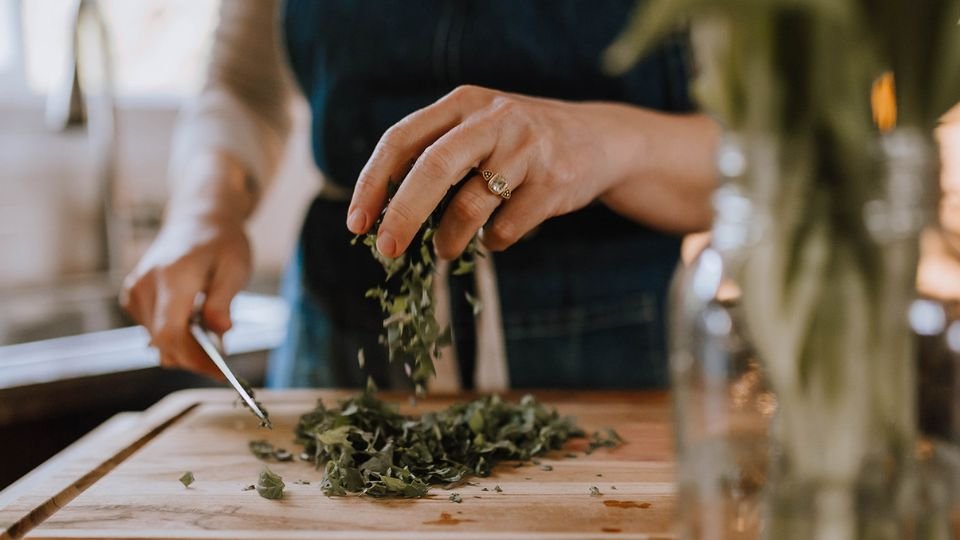Truth bomb: You don’t need a recipe to cook.
Below you’ll find three tips to do it right.
I almost never use recipes to cook these days. Even when I manage to reference a recipe – my own or someone else’s – I never follow it exactly. I tweak it, modify it, move things around according to the season or how I’m feeling. I’m not afraid to take risks, which is how I avoid falling into cooking ruts.
The risks I take are the reason that 5% of my meals don’t turn out so great. But I’ll take the 95% success rate without the confines of needing to get it 100% perfect. Because chances are I’ve also had a lot of fun in the process.
I want to invite you to have fun too. I’m sharing an (un)recipe below that has tons of variations that you can use as the starting point for turning your kitchen into a mad scientist’s laboratory (or a witch’s den).
But before I even share the (un)recipe, I’m going to share three (un)rules (called that because you should make them your own) for exploring this new space in your kitchen.
But there’s one ingredient you’ll need to leave behind – perfectionism. Because the greatest killer of all creativity is the expectation that you’ll do it exactly right the first 100 times you try.
Here are three ways to learn to cook with risk as your friend:
- Let go of the concept of failure
When we were kids, we learned entirely through play. There was no such thing as failure then, only questions of, “what if?” and “why not?” Bring that attitude to the forefront. Don’t be afraid to screw up. Besides – it’s only dinner. Even your worst mistake won’t be that bad. - Use recipes, but as suggestions
If the recipe calls for carrots but you’re feeling butternut squash, swap it.
If the recipe says mango but you live in Minnesota, go with something local.
If the recipe says ¾ cup but you wonder what ½ cup would do, try it.The worst thing that could happen is that you learn something about what you like (and learn that every recipe is made based on that author’s preferences).
- Get cool with clean up
If you experiment, you’re going to make a mess. The mess might be a pile of dishes, the annoyed looks from your kids as you try to get them to eat your latest creation, or frustration that something didn’t go as you expected it. Expect it. Build in space for cleaning up, whether that’s actual kitchen clean-up, having a good sandwich on hand, or laughing at your mind’s mistaken belief that you can do something perfectly right out of the gate.
As promised, here’s an (un)recipe to take some risks with.
(Un)Pesto
2 cups of any leafy green vegetable, chopped (kale, swiss chard, spinach, fresh nettles, arugula, etc.)
½ cup fresh basil
⅓ cup any kind of nut or large seed (walnut, pecan, pine nuts, sunflower seeds)
¼ cup oil (olive, sunflower, sesame, ghee)
¼ tsp salt
Optional add ins:
¼ tsp. Black pepper
½ tsp. Any ground spice (fennel, cumin, coriander)
½ tsp. lemon zest
Bring a pot of water to boil. Blanch the greens and basil for 1-2 minutes or until the leaves turn bright green. Strain but reserve about 1 cup of the boiling water.
Meanwhile, warm the oil in a small pan. Add the salt and pepper and nuts. Cook for 3-5 minutes, or until the nuts are toasted.
Add all ingredients to a blender, along with ¼ cup of the cooking water. Blend, adding more water as needed to make a smooth and creamy texture.
Use as a pizza sauce, toss over pasta or grain, or spread on toast.





